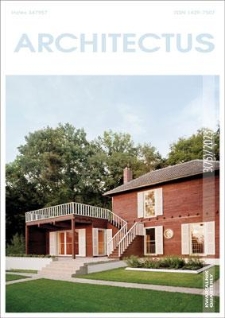Dolnośląska Biblioteka Cyfrowa udostępnia 102 782 obiektów cyfrowych
Obiekt
Tytuł: Transformations of the form and façade of the Lehndorff palace in Sztynort Duży in the light of architectural research
Tytuł odmienny:
Autor:
Współtwórca:
Opis:
Architectus : Pismo Wydziału Architektury Politechniki Wrocławskiej, 2023, nr 3 (75), s. 15-25
Abstrakt:
Wydawca:
Oficyna Wydawnicza Politechniki Wrocławskiej
Miejsce wydania:
Data wydania:
Typ zasobu:
Identyfikator zasobu:
doi:10.37190/arc230302 ; oai:dbc.wroc.pl:126248
Źródło:
<sygn. PWr A5234III> ; kliknij tutaj, żeby przejść ; www.architectus.arch.pwr.wroc.pl ; kliknij tutaj, żeby przejść
Język:
Powiązania:
Architectus : Pismo Wydziału Architektury Politechniki Wrocławskiej ; Architectus : Pismo Wydziału Architektury Politechniki Wrocławskiej, 2023 ; Architectus : Pismo Wydziału Architektury Politechniki Wrocławskiej, 2023, nr 3 (75)
Prawa:
Pewne prawa zastrzeżone na rzecz Autorów i Wydawcy
Prawa dostępu:
Dla wszystkich zgodnie z licencją
Licencja:
CC BY-NC-ND
Lokalizacja oryginału:
Tytuł publikacji grupowej:
Kolekcje, do których przypisany jest obiekt:
- Dolnośląska Biblioteka Cyfrowa > Uczestnicy Konsorcjum > 01. Politechnika Wrocławska > Czasopisma > Wydane w PWr > Architectus
- Dolnośląska Biblioteka Cyfrowa > Zasoby > 2. Czasopisma > Czasopisma współczesne
- Dolnośląska Biblioteka Cyfrowa > Dziedziny nauki > 2. Nauki inżynieryjno-techniczne
Data ostatniej modyfikacji:
11 kwi 2024
Data dodania obiektu:
11 kwi 2024
Liczba wyświetleń treści obiektu:
118
Wszystkie dostępne wersje tego obiektu:
https://dbc.wroc.pl./publication/165110
Wyświetl opis w formacie RDF:
Wyświetl opis w formacie OAI-PMH:
| Nazwa wydania | Data |
|---|---|
| Transformations of the form and façade of the Lehndorff palace in Sztynort Duży in the light of architectural research | 11 kwi 2024 |
Obiekty Podobne
Piaskowska, Beata Prarat, Maciej Różański, Artur Olszacki, Tomasz Schaaf, Ulrich Łużyniecka, Ewa. Redakcja
Schaaf, Ulrich Prarat, Maciej Ważny, Tomasz Łużyniecka, Ewa. Redakcja
Kucharzewska, Joanna Łużyniecka, Ewa. Redakcja
Instytut Historii Architektury Sztuki i Techniki Politechniki Wrocławskiej
Instytut Historii Architektury Sztuki i Techniki Politechniki Wrocławskiej
Instytut Historii Architektury Sztuki i Techniki Politechniki Wrocławskiej
Instytut Historii Architektury Sztuki i Techniki Politechniki Wrocławskiej
Czerner, Olgierd Instytut Historii Architektury Sztuki i Techniki Politechniki Wrocławskiej
























